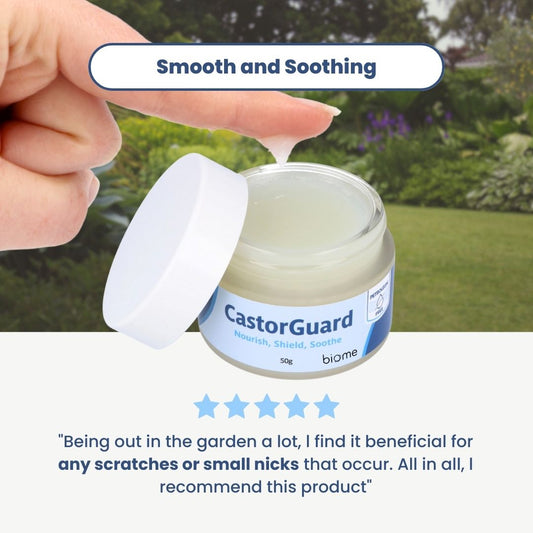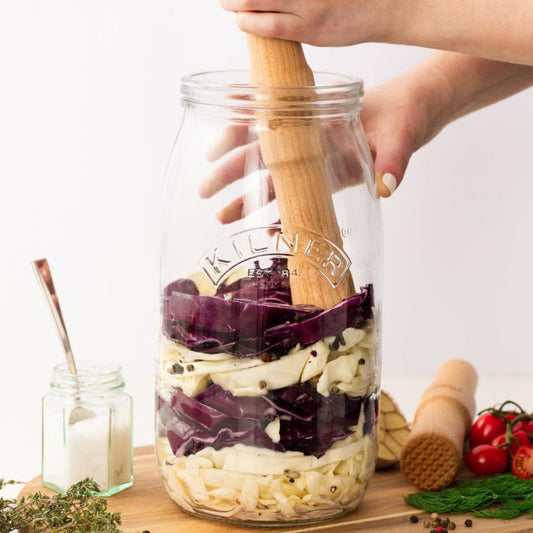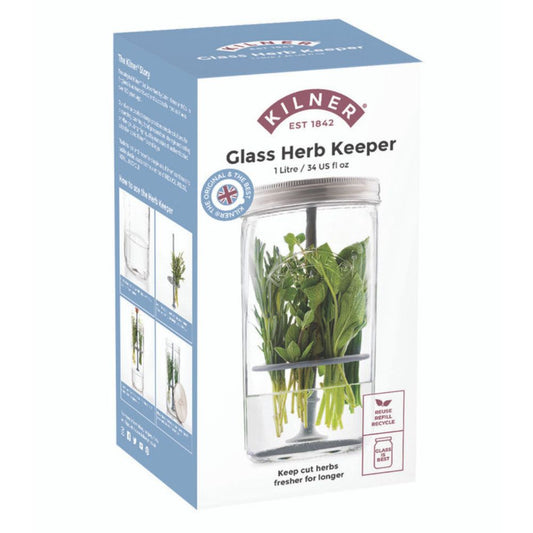
Sprouts are a go-to for getting lots of nutrients into your meals with minimal effort and cost. These mini plants were once the buzzword in the salad world, seemingly everywhere. They are coming back into vogue due to how easy and cheap they are to grow and keep right in the kitchen where you need them. They don't generate waste and don't need cooking. Plus, they pack a power punch of nutrients to keep brains and bodies humming! Sprouts at the supermarket generally come in
single use plastic packaging, making it difficult for those trying to reduce single use plastic to easily incorporate sprouts into their diet. However growing your own sprouts at home is actually really easy and fun to do. Home sprouting is also potentially healthier as sprouts that have been commercially produced and packaged can harbour illness-causing bacteria. So read on as we show you how to grow sprouts at home.
What Exactly is a Sprout?
A sprout is a new shoot or a seed from plants, grains or legumes that has been germinated. Examples of seeds commonly sprouted include wheatgrass, alfalfa, lentils, mung beans and soybeans.
Why Should you be Adding Sprouts to the Menu?
Sprouts are a mainstay of any healthy food diet. They are infused with vitamins A, the B's, C, K, silica and amino acids to help you achieve vibrant health. They are also an easy way to up the fibre content in your day and help manage cholesterol. Eating sprouts like alfalfa, broccoli or bean is like eating a little plant with the nutrition all in place. Sprouts are essentially the growth from a seed before transforming into a plant. Sprouts provide a number of enzymatic, digestive and nutritional properties. Foods like legumes and beans, that can often cause gas issues, are easier to digest in sprout form.
How to Grow Sprouts at Home
Growing your own nutritious sprouts at home doesn't mean buying loads of fancy equipment. All you need to grow sprouts is a wide mouth glass jar with a sprouting lid.

A popular, easy and aesthetically pleasing way to grow sprouts is using preserving or mason jars such as these by
Ball. Pair the jar with the special sprouting
lid and away you go. The mesh lids facilitate airflow and make it easier to drain off water after soaking and rinsing.

The smaller jars are useful for sprouting smaller seeds and larger jars are better for legumes and grains.
Shop mason jars and sprouting lid here >
Choosing seeds
Pretty much any seed can be sprouted, but it's best to go for organic non-GMO. Some have a handy ‘sproutable' printed on the label. Try to avoid any seeds that have been chemically treated, toasted, cracked, roasted or milled. Purchase in sealed packages and not from bulk bins to minimise bacteria. Our
Little Veggie Patch heirloom seeds are ideal.
How to start sprouting
- Get your mason jar and sprouting lid ready, and ensure they are clean
- Rinse seeds with cool water and drain
- Remove any debris or seeds that aren't intact
- Place rinsed seeds in your mason jar and ¾ fill with cool water
- Cover with mesh sprouting lid and soak for 8 hours. Larger seeds and sprouting in a colder climate need more soaking time and small seeds or a warm climate a shorter time.
Draining seeds
- Drain seeds well over many hours, with lots of air circulation. This is where the beauty of the mesh lids shine. Simply turn the jar upside down and prop so it can drain for a few hours.
- Rinse seeds with cool water and repeat the draining step
- A general rule of 2-3 days of rinsing and draining about 3 times per day is good. In very warm temperatures rinse more often.
- When they are ready to be eaten, rinse once more and remove any seeds or hulls that haven't sprouted. Drain again before eating or storing for later. Sprout the seeds to your desired length.
- Store extremely well-rinsed and drained sprouts in an airtight glass container if not using immediately and refrigerate.
So, there you have the long and the short on sprouting at home. It's nice and simple, a great activity to get kids involved in, and looks cool in your kitchen too. Let us know if you have successfully sprouted and what health benefits you may have noticed.
 Sprouts are a go-to for getting lots of nutrients into your meals with minimal effort and cost. These mini plants were once the buzzword in the salad world, seemingly everywhere. They are coming back into vogue due to how easy and cheap they are to grow and keep right in the kitchen where you need them. They don't generate waste and don't need cooking. Plus, they pack a power punch of nutrients to keep brains and bodies humming! Sprouts at the supermarket generally come in single use plastic packaging, making it difficult for those trying to reduce single use plastic to easily incorporate sprouts into their diet. However growing your own sprouts at home is actually really easy and fun to do. Home sprouting is also potentially healthier as sprouts that have been commercially produced and packaged can harbour illness-causing bacteria. So read on as we show you how to grow sprouts at home.
Sprouts are a go-to for getting lots of nutrients into your meals with minimal effort and cost. These mini plants were once the buzzword in the salad world, seemingly everywhere. They are coming back into vogue due to how easy and cheap they are to grow and keep right in the kitchen where you need them. They don't generate waste and don't need cooking. Plus, they pack a power punch of nutrients to keep brains and bodies humming! Sprouts at the supermarket generally come in single use plastic packaging, making it difficult for those trying to reduce single use plastic to easily incorporate sprouts into their diet. However growing your own sprouts at home is actually really easy and fun to do. Home sprouting is also potentially healthier as sprouts that have been commercially produced and packaged can harbour illness-causing bacteria. So read on as we show you how to grow sprouts at home.
 A popular, easy and aesthetically pleasing way to grow sprouts is using preserving or mason jars such as these by Ball. Pair the jar with the special sprouting lid and away you go. The mesh lids facilitate airflow and make it easier to drain off water after soaking and rinsing.
A popular, easy and aesthetically pleasing way to grow sprouts is using preserving or mason jars such as these by Ball. Pair the jar with the special sprouting lid and away you go. The mesh lids facilitate airflow and make it easier to drain off water after soaking and rinsing.  The smaller jars are useful for sprouting smaller seeds and larger jars are better for legumes and grains. Shop mason jars and sprouting lid here >
The smaller jars are useful for sprouting smaller seeds and larger jars are better for legumes and grains. Shop mason jars and sprouting lid here >


































